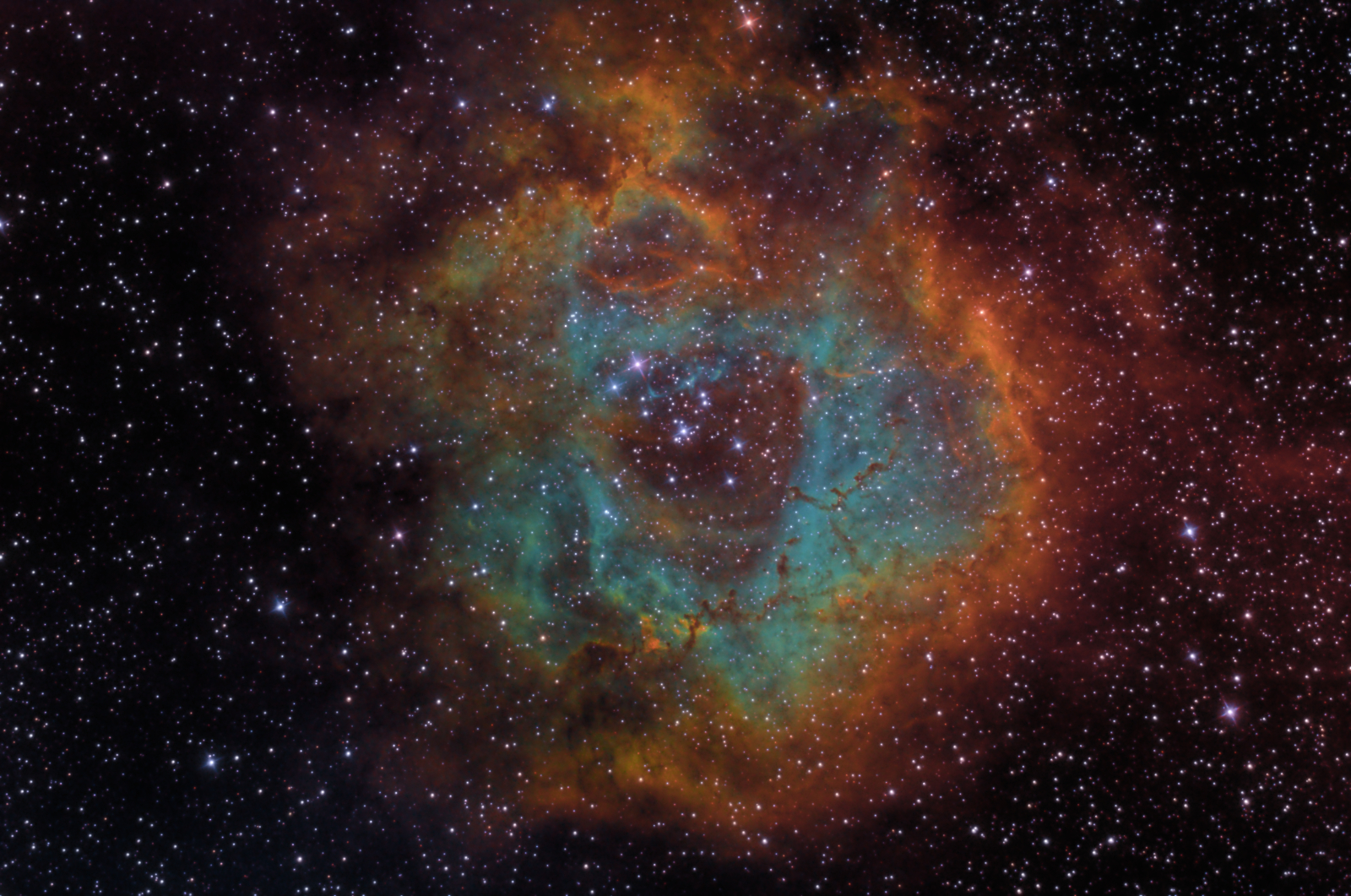When it was still bicolor, I did run DSS' Bayer Drizzle on it. Weird results, and for various reasons ST doesn't really like the data. I couldn't get SVD to work worth a darn. And this was even after it has been binned down to clear up the uneven and scattered results of the CFA drizzle.
The SHO versions above were just standard DSS bilinear. I next tried out DSS superpixel, as another non-interpolated option for "real" data, and just left it at the resulting resolution. Which is about the same as the 50% bin I've been using on this target anyway.
Finally, I was going to try those out in ASTAP, but it appears Han removed them for not performing as well as expected or hoped. He did add his own new demosaicing, Simple C, which is what I tried out.
I tried to process and color as identically as I could, sometimes with same settings, and sometimes by eye. But once the underlying data changes up a bit, things start diverging and so perfect matches aren't easy it seems.
This quad compare of a zoomed region has DSS bilinear top left, DSS superpixel top right, DSS Bayer Drizzle bottom left (bicolor), and ASTAP bottom right. Each fully processed, but not necessarily finalized.
It does seem to me that the ASTAP version is a pretty good compromise of colors, stars, and clarity of detail, and ST seemed to like working with the data as well. And for whatever reason, unlike the DSS stacks, I didn't seem to have to run separate wipes on each filter -- Wipe handled the ASTAP composite in one fell swoop -- nor did I need to crop off the left edge due to remnant gradient.
It takes longer, but the quality here may beat out DSS' speed. I'd still put DSS straight bilinear in second place though.
I know we are supposed to just pick bilinear with whichever stacker, but, any thoughts on the new ASTAP demosaic? I will probably use these stacks to put together my final version of the Rosette. I still haven't really looked at what Siril offers for options, but I think it's even slower than ASTAP.
